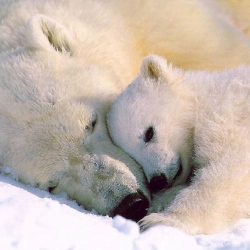
Put a polar bear and a biophotonics expert together in a chilly room and what do you get? Potentially, better insulation. When looking to uncover the secrets of the impressive insulation properties of polar bear fur, researchers found that radiation plays a larger role than conduction in the insulation of polar animals, such as penguins and polar bears.
It was previously thought that feathers and fur work to keep polar animals such as polar bears and penguins warm by trapping a layer of air that slows thermal conduction and loss of body heat. Instead biophotonics scientist Priscilla Simonis and her team found that heat loss between two bodies separated by air was more affected by radiation than by conduction.
Using computer models, the researchers showed how radiative shields, used to mimic individual hairs in a polar bear’s fur, effectively backscattered heat.
Backscattering is the deflection of energy at an angle of up to 90 degrees from the source. This deflection was not only limited to the infrared spectrum, or heat, but also reflected visible light, helping in animal camouflage in the snowy conditions by making their coats look white (despite appearances, polar bear fur is actually pigment-free and transparent). By adding more shields (hairs) the loss of energy was greatly reduced.
